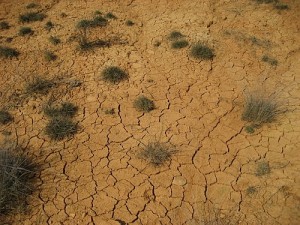More Water Woes for the Border
By Melissa del Bosque
The drug war plaguing the U.S.-Mexico border since 2006 has all but eclipsed any news about ongoing squabbles over the U.S.-Mexico water treaty. But with an intensifying extreme drought along our southern border, it looks like another battle over the binational treaty is percolating.
This week Cesar Duarte Jaquez, Governor of Chihuahua, demanded a revision of the 1944 water treaty to keep more water for his state and northern Mexico, which he says is rapidly growing, according to La Jornada. Chihuahua with its mostly arid climate has a large agricultural sector that relies on water from the Rio Conchos the most important Mexican tributary to the Rio Grande. This water is vital for both Mexican and U.S. citizens downstream.
Duarte and the state’s legislators are suing the Mexican federal government for more control over Chihuahua’s 61 aquifers. At least 14 are already over exploited and five more are in danger of also drying up. At least 80 percent of the state relies on these aquifers for their drinking water. The state’s leaders are now scrambling for other sources of water. Some legislators would like to build a series of dams to retain runoff from the Sierra Tarahumara, water that would normally go to Chihuahua’s neighboring states of Sonora and Sinaloa.
Nuevo Leon, another Texas-Mexico border state, is also searching for ways to find more water for a booming population. To solve their rapidly growing water shortage, state leaders are building a 226 mile-pipeline to the Panuco River in the state of Veracruz.
It wasn’t long ago that the biggest battle on the border was over water. Under the binational treaty, Mexico is expected to deliver to the U.S. a minimum of 350,000 acre-feet of water each year on a five-year cycle. The water is then stored at the international Falcon and Amistad reservoirs.
Just a decade ago, Mexico owed the United States 1.4 million acre-feet of water because of severe drought conditions. At the time, U.S. and Mexican farmers in the Rio Grande Valley region were staging protests and going broke because they couldn’t water their crops. It took a good few years of rain for Mexico to finally pay its water debt back in 2005. Now, it looks like the two countries could be headed toward another showdown if the extreme drought persists.
[Image Courtesy Wikicommons]

